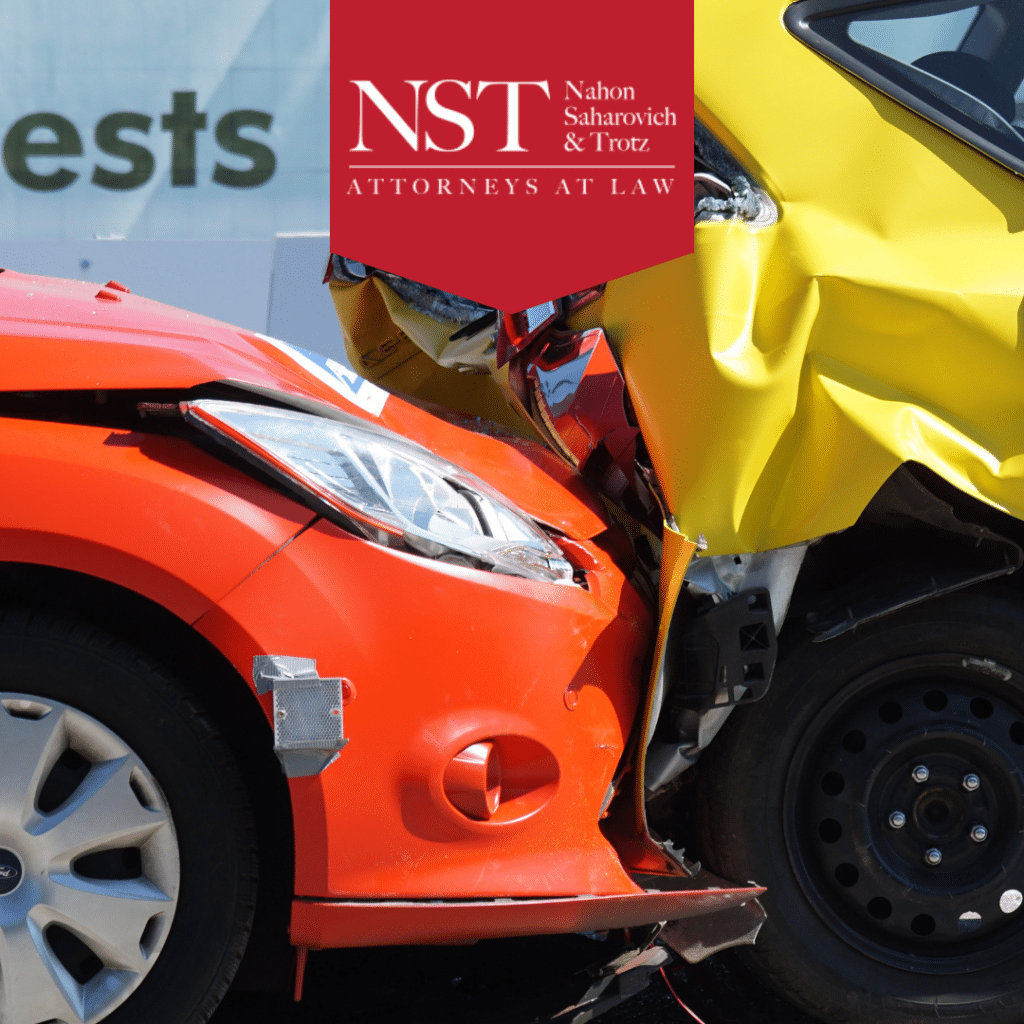In a rear-end collision, the rear driver is typically liable, though this is not always the case. Other factors, such as weather conditions, sudden stops, and negligent reversing, can complicate the determination of fault. Drivers concerned about determining who is at fault in a rear-end collision should contact an experienced attorney at NST Law for assistance.
Rear-end collisions are relatively common automobile accidents, but they still have the potential to cause serious injury and tens of thousands of dollars of damage. These collisions are frequently the result of user negligence, and determining which party acted negligently is crucial in assigning liability.
To ensure victims of negligent rear-end collisions are properly compensated, it is essential to determine who is at fault in a collision. If you were involved in a rear-end collision in Tennessee, Mississippi, Missouri, Illinois, or Arkansas, NST Law’s experienced attorneys are here to help you.
Definition and Common Causes of Rear-end Collisions
A rear-end collision occurs when one vehicle collides with the car in front of it. However, rear-end collisions are not limited to just two vehicles. This type of collision can involve a chain reaction with three or more cars.
Rear-end collisions are the most common type of motor vehicle accident and can result from various factors. Speeding, distracted driving, tailgating, sudden braking, and dangerous weather conditions are among the most frequent causes of rear-end collisions.
Legal Principles and Liability
Negligence is the failure to meet the expected level of care a reasonable person would display in a similar situation. It is a major factor when determining fault in accidents. If it’s possible to prove a driver acted negligently, that person will likely bear some or all of the responsibility for the accident.
Generally, the rear driver has a “presumption of liability,” meaning they are presumed responsible for the collision. Drivers are expected to leave a safe amount of space between their vehicle and the one in front of them, so the rear driver typically bears much of the responsibility for preventing rear-end collisions. Drivers are negligent when they fail to exercise care when driving behind another car.
However, a variety of factors influence how the law determines liability. The rear driver can be deemed only partially or not responsible at all in certain circumstances, such as sudden, erratic stops, poor weather conditions, or the lead driver reversing negligently.
Comparative Negligence and Contributory Fault
When the front driver is partially at fault for a collision, comparative negligence and contributory fault principles play an important role in allocating fault and liability.
Comparative negligence assigns liability based on each party’s contribution to the accident. For example, insurance carriers and courts may review the evidence each driver submits and determine the rear driver’s negligence in failing to keep a safe following distance accounts for 70 percent of the fault, while the front driver is 30 percent at fault for making a sudden stop.
In contrast, contributory fault dictates that if either party was even slightly negligent during the accident, neither is entitled to any compensation.
States vary as to which standard they apply in negligence cases. For example, Tennessee has a “modified comparative negligence” law, allowing you to recover damages if you were less than 50 percent at fault for the car accident. However, your compensation award will be reduced depending on your share of the blame.
Meanwhile, Mississippi has s a “pure comparative negligence” statute. Under this law, accident victims can seek compensation for their injuries and other losses even if they bear most of the responsibility for the accident.
Given these differences from state to state, it’s important to consult with an attorney in your area about the specifics of state law.
Evidence and Investigation
Rear-end collisions can cause severe injuries and expensive damage, which is why it is important to gather evidence after a collision for insurance and legal purposes.
The following types of evidence can support a determination of fault:
- Accident scene photographs
- Traffic camera footage
- Witness statements
- Police reports
- Property damage and debris
- Skidmarks
It is important to gather and submit this evidence as soon as possible. Insurance companies will consider this evidence when conducting their investigation into the collision. Based on the evidence collected, the insurance company will determine which parties were negligent and subsequently determine fault.
If you believe the insurance company incorrectly determined fault in your case, you should seek legal advice. Contact an experienced car accident attorney at NST Law to learn more about your options.
Legal Considerations and Insurance Claims
Following a rear-end collision, insurance companies will consider the claim and supporting evidence to determine who is at fault. Typically, the at-fault driver’s insurance will pay to cover the auto repair and medical costs, if any, incurred by the accident.
Insurance companies often employ certain tactics to pay out as little as possible. They may deny a driver’s liability to avoid paying out the claim, or they may attempt to pay out less than is owed to the victim. These claims are also often slow-moving, delaying the ability of the victim to access relief and compensation following a collision. These delays can result in financial hardship, forcing victims to handle out-of-pocket medical expenses and vehicle repairs.
When insurance companies try to avoid paying claimants the amount owed, having an attorney present can be a significant asset. Seeking legal representation in cases of rear-end collisions may be especially necessary in cases where responsibility is disputed or if insurance does not agree to cover all costs associated with the accident. NST Law has years of experience dealing with insurance companies and can help victims navigate the complexities of these cases.
Case Studies and Precedents
While every state has different accident laws, the presumption of liability for the rear driver is universal. However, it may be necessary in some cases to prove the rear driver was negligent and, therefore, at fault.
For example, in the Florida case of DJ Spencer Sales v Clampitt, the court determined the front driver was partially negligent because they braked suddenly without brake lights, but the rear driver also failed to decelerate properly. In such cases, allocating liability in light of legal precedent and complicated facts is rarely straightforward.
In one case, NST Law proved the rear driver’s fault in a collision by bringing in a professional accident reconstructionist and black box data from the truck. In this case, NST Law secured $1.2 million for the injured party, helping to offset the costs of his medical bills and compensate him for the serious injuries he sustained during the accident.
It is important to remember that different states and jurisdictions have different laws related to liability in rear-end collisions, so it is beneficial to consult an experienced attorney in your area. Successful real-life settlements negotiated by NST Law in Tennessee, Missouri, Arkansas, Illinois, and Mississippi established a strong reputation as champions for the injured in rear-end collision cases.
Seeking Legal Advice and Assistance
When involved in a serious rear-end collision, seeking legal advice from an experienced attorney specializing in personal injury and traffic law will help ensure you are fairly compensated and receive the justice you deserve. Experienced attorneys like the car accident attorneys at NST Law have the expertise necessary to navigate the ins and outs of such cases.
Attorneys play an important role in protecting the rights of their clients and achieving proper compensation for damage and injuries resulting from rear-end collisions. An experienced car accident attorney at NST Law will know the intricacies of dealing with insurance companies and determining the allocation of fault in rear-end collisions, giving them the expertise they need to pursue fair compensation for their clients.
Get Compensated for Your Rear-End Collision
Rear-end collisions are the most common type of automobile accident and can potentially cause serious injuries and thousands of dollars in property damage. While the rear driver in these accidents is assumed to be at fault, there are some cases where liability may not be cut-and-dry.
If you have been involved in a rear-end collision or need further clarification on fault determination, it is essential to seek proper legal advice. Contact NST Law today for a free consultation with our experienced attorneys. Protect your rights and ensure you receive the compensation you deserve. Don’t wait — take action now to get the compensation you deserve.
Frequently Asked Questions
Who is Usually at Fault in a Rear-End Collision?
The rear driver has the presumption of liability in rear-end collisions, so they are usually determined to be at fault.
When You Roll Back into Someone, Whose Fault Is It?
The driver who strikes another car is typically considered to be at fault. In cases where a car rolls backward or reverses into another, the reversing driver would be at fault due to negligence in reversing.
What Happens When a Car Gets Hit from Behind?
A rear-end collision is when one car collides with the rear bumper of the car in front of it. These accidents can cause significant injury and damage to vehicles.
How bad is a Rear-End Collision?
Rear-end collisions are common and can range from small fender-benders to serious accidents causing injury and death. In collisions that cause significant damage, legal action may be necessary.
 Skip to content
Skip to content


